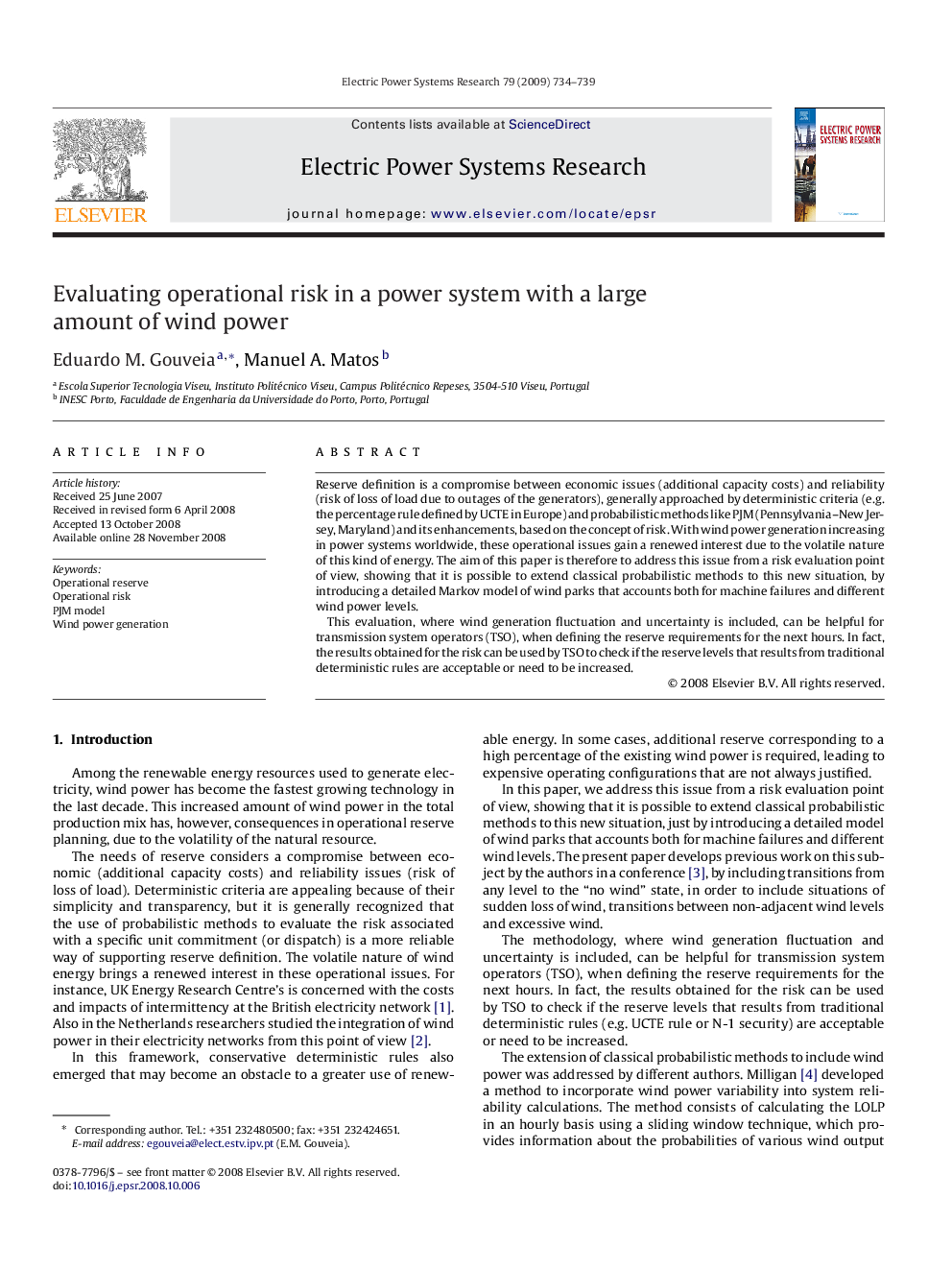| Article ID | Journal | Published Year | Pages | File Type |
|---|---|---|---|---|
| 704081 | Electric Power Systems Research | 2009 | 6 Pages |
Reserve definition is a compromise between economic issues (additional capacity costs) and reliability (risk of loss of load due to outages of the generators), generally approached by deterministic criteria (e.g. the percentage rule defined by UCTE in Europe) and probabilistic methods like PJM (Pennsylvania–New Jersey, Maryland) and its enhancements, based on the concept of risk. With wind power generation increasing in power systems worldwide, these operational issues gain a renewed interest due to the volatile nature of this kind of energy. The aim of this paper is therefore to address this issue from a risk evaluation point of view, showing that it is possible to extend classical probabilistic methods to this new situation, by introducing a detailed Markov model of wind parks that accounts both for machine failures and different wind power levels.This evaluation, where wind generation fluctuation and uncertainty is included, can be helpful for transmission system operators (TSO), when defining the reserve requirements for the next hours. In fact, the results obtained for the risk can be used by TSO to check if the reserve levels that results from traditional deterministic rules are acceptable or need to be increased.
